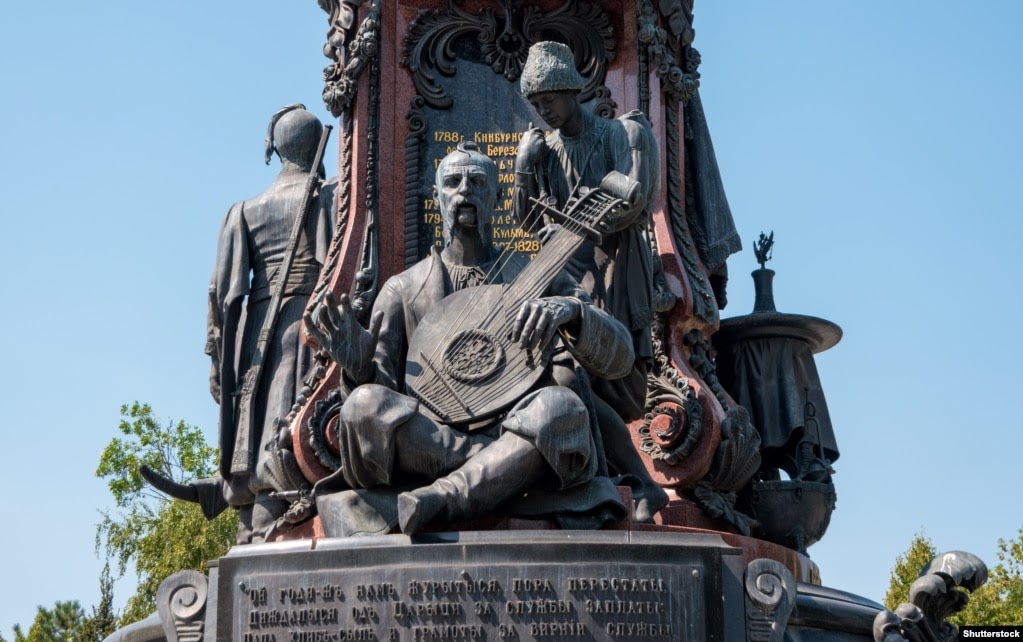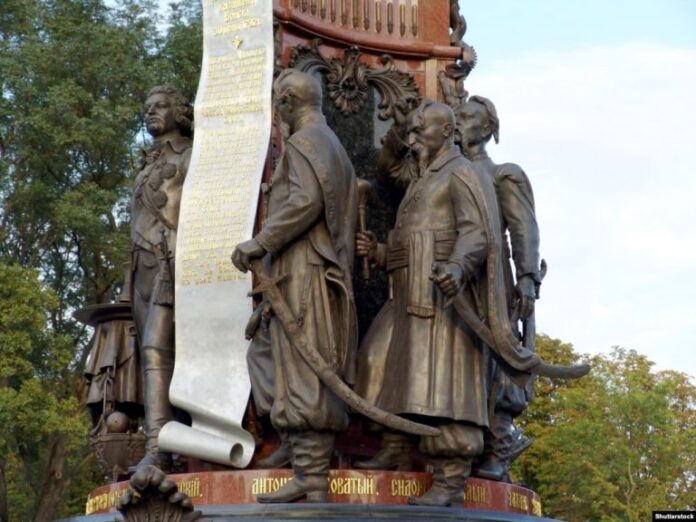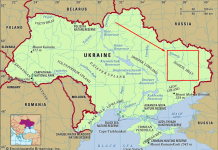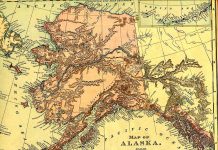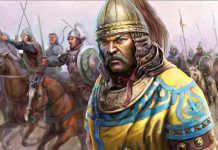So, how did Moscow reward the Ukrainian Cossacks for saving its Black Sea Fleet and defeating the Turks? A decade after the event, Dr. Edward Clarke saw the situation the following way: “In consequence of the service they rendered to Russia in her last war with Turkey, Catherine, by a ukase of the 2d of June 1792, ceded to them the peninsula of Taman, and all the countries between the Kuban and the Sea of Azof, as far as the rivers Ae and Laba; an extent of territory comprehending upwards of 1000 square miles… The Tchernomorski [the Black Sea Cossacks] are a brave, but rude and war-like people, possessing little of the refinement of civilised society, although much inward goodness of heart; and they are ready to show the greatest hospitality to strangers who solicit their aid. Their original appellation was Zaporogztzsi… a term alluding to their former situation “beyond the cataracts” of the Dnieper, from the banks of which river they were removed by the late Empress Catherine to those of the Kuban, in order to repel the incursions of the Circassians and Tartars from the Turkish frontier. Their removal was originally planned by Potemkin, but did not take place until about nine years previous to our arrival in the country.
They do not resemble the Cossacks of the Don in habits, in disposition, or in any circumstance of external deportment. The Cossacks of the Don all wear the same uniform: those of the Black Sea any habit which may suit their caprice. The Don Cossack is mild, affable, and polite; the Black Sea Cossack is blunt, and even rude, from the boldness and hardihood of his manner. If poor, he is habited like a primeval shepherd, or the wildest mountaineer; at the same time having his head bald, except one long braided lock from the crown, which is tucked behind the right ear. If rich, he is very lavish in the costliness of his dress, being covered with gold, silver, velvet, and the richest silks and cloths of every variety of colour; but wearing at the same time short cropped hair, which gives to his head the appearance of the finest busts of the ancient Romans. The distinctive mark of a Black Sea Cossack, borne by the lower order among them, of a braided lock from the crown of the head, passing behind the right ear, is retained even by the officers, but concealed by the younger part of them, with very artful foppery, among their dark hair. They seemed ashamed to have it noticed, although, like a relic on the breast of a catholic, it was preserved even with religious veneration; and there was not one of them who would not sooner have parted with his life, than with this badge of the tribe to which he belonged…
Celebrated as they justly are for their skill in horsemanship, they acknowledge themselves inferior in this respect to the Circassians, whose light bodies, lightly accoutred, on the fleetest horses in the world, outstrip them in the chase. Yet I know not a more interesting object than a Cossack of the Tchernomorski mounted and equipped for war. It is then only they may be said to exist, and in their native element; brandishing their long lances in the air, bending, turning, or halting suddenly when in full speed, with so much graceful attitude, and such natural dignity, that the horse and his rider seem as one animal.
The reins of government are entirely in the hands of the ataman and his officers. These wear the most theatrical and showy dresses which are known to any people in the whole world. Their breasts are covered with chains of gold and lace. Their sabre is Turkish, their boots of red or yellow-coloured leather, their cap of black velvet, ornamented with lace and silver chains, or fine black Tartarian wool, taken from lambs in an embryo state; and the waist bound with silken sashes, which support pistols of the most costly workmanship. A small whip, with a short leathern thong, is attached to their little finger. The lower extremity of their lance is supported by the right foot; and from the powder flask which hangs in front are suspended silver coins and other trinkets…
The Tchernomorski are much more cheerful and noisy than the Don Cossacks; turbulent in their mirth; vehement in conversation; somewhat querulous; and, if not engaged in dispute, are generally laughing or singing. The Cossacks of the Don hold this people in little estimation, considering them as an inferior band of plunderers when in actual service. But it must be said, the Tchernomorski entertain the same sentiments with regard to them, making those remarks which the uneducated and lower class of English do with regard to foreigners; such as, that “one Cossack of the Black Sea is a match for any three of his neighbours on the Don.” The Russian regards both with aversion, and affects to consider them beneath his notice and unworthy his society, for no other assignable reason than ignorance or envy. The Cossack is rich; the Russian poor. The Cossack is high minded; the Russian abject. The Cossack is for the most part clean in his person, honourable, valiant, often well informed, and possesses, with his loftiness of soul, a very noble stature; the Russian is generally filthy, unprincipled, dastardly, always ignorant, and rarely dignified by any elevation of mind or body…”
At first sight, the resettling appeared like a gift and it was even reflected in the name of the city the Ukrainian Cossacks founded in that area – Ekateronodar which can be translated as ‘Catherine’s Gift‘. It is the current city of Krasnodar situated several miles to the east from the notorious Kerch Bridge. Dr. Clarke described the period of its founding:
“Ekaterinedar, or Catherine’s Gift, the capital of the Tchernomorski Cossacks, makes a very extraordinary appearance. It has no resemblance to a town; but is rather a grove or forest of oaks, in which a number of straggling cottages, widely separated, are concealed not only from all general observation, but even from the view of each other. The inhabitants have cut down and cleared as many as they could; but the streets, if they may be so called, and the spaces between the houses, are covered with dwarf oaks, and thick branches of scions yet rising from the roots which are left in the earth.
The very foundation of the city bore date only eight years previous to our arrival; so that it still had the appearance of a colony newly transported to the wildernesses of America, maintaining a struggle, against all the obstacles opposed to it, from inhospitable natives, unpenetrable woods, and an unwholesome climate. The houses of the inhabitants were neater than our best English cottages. Each owner possessed a large area before his door, to which an avenue of the finest oaks conducted; also an adjoining garden, in which we noticed the vine, the water-melon, and the cucumber. The sun-flower blooms spontaneously every where, without cultivation; and many plants found only in our greenhouses are the weeds of the plain.
In their new settlement, the Tchernomorski still display the same manners and mode of life which they practised before they migrated from the Dnieper. By this means the Circassians, and even those of the Russians who live among them or near them, are instructed in many domestic arts of comfort and cleanliness to which they were before strangers…”
But was it a gift? When one has to leave one’s native land, the land of ancestors, and has to move to another place it does not feel like a nice thing. Especially when that new place was the newly-conquered area and the Cossacks had to defend themselves from the attacks of the new neighbors. Dr. Clarke observed the drastic effect it had on the Ukrainian Cossacks in the short run:
“They were allowed the privilege of choosing an ataman, but their numbers have considerably diminished. They could once bring into the field an army of 40,000 effective cavalry. At present, the number of troops which they are able to supply does not exceed 15,000.” As mentioned in a previous article, deportation of the natives was part of Moscow’s policy in exterminating smaller nations.
Ukrainian neatness vs. Russian filth >
“Gardariki, Ukraine” e-book has more insights into Ukraine’s history.
